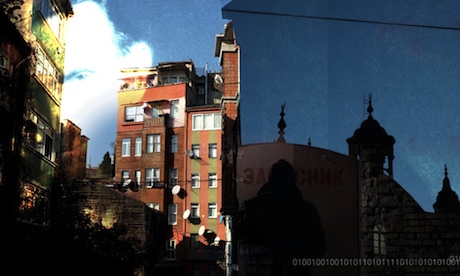
by Frank Cifaldi, July 18, 2012 (Excerpt)
'It has often been said that the true star of Rockstar's groundbreaking Grand Theft Auto IV was not lead character Niko Bellic but, rather Liberty City itself, a fictional metropolis modeled after New York City.
Creating a breathing, living city is one of the toughest challenges facing developers of open world games today: get it wrong, and your player feels like she's walking through a lifeless television set with cheap props and false fronts for buildings. Get it right, and she'll be absorbed enough in your world to momentarily forget she's playing a game at all.
Ubisoft Montreal is among the best in the business at creating believable cities thanks to its Assassin's Creed series. We sat down with Alex Hutchinson, creative director of the upcoming Assassin's Creed III, for his tips on making a city feel alive. He tells us it's "one of the hardest things you could possibly do," but managed to offer the following.
1. Two-tiered reactions
It is a given that NPCs in open world cities will react to your actions: fire into a crowd in any Grand Theft Auto, and pedestrians will run screaming, cops will come after you, and some of the rougher types might even fire back.
What Ubisoft Montreal has been focusing on for the Assassin's Creed is in two-tiered reactions: NPCs that understand not only the action the player has committed, but how it relates to them. Hutchinson explains:
"If someone hires you to kill Character A, and you do it, and they react like, 'Good, that's what I asked you to do.' But then you go and kill some other random person and they're going to freak out, like you've lost your mind. Whereas someone who wasn't involved in that conversation would freak out at both of the instances."
It sounds simple when explained that way, but Hutchinson insists that it is "one of those things that no one in games yet has truly solved," including his own team....'









































